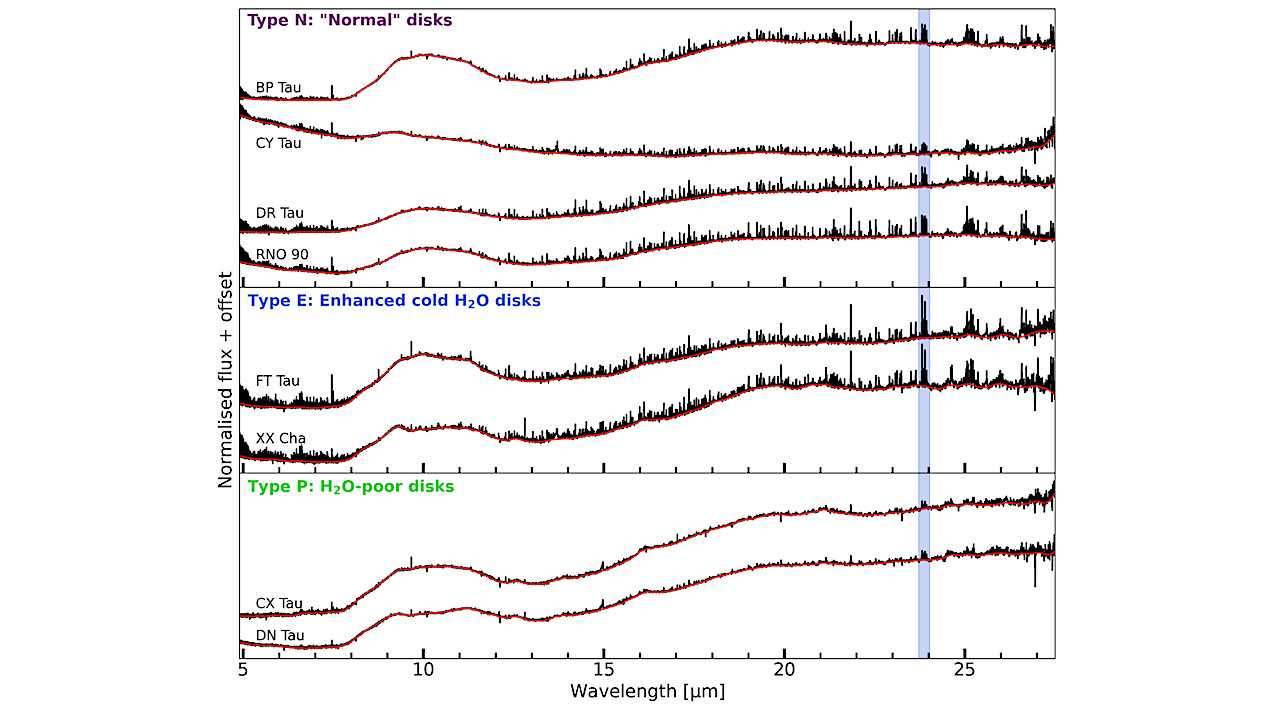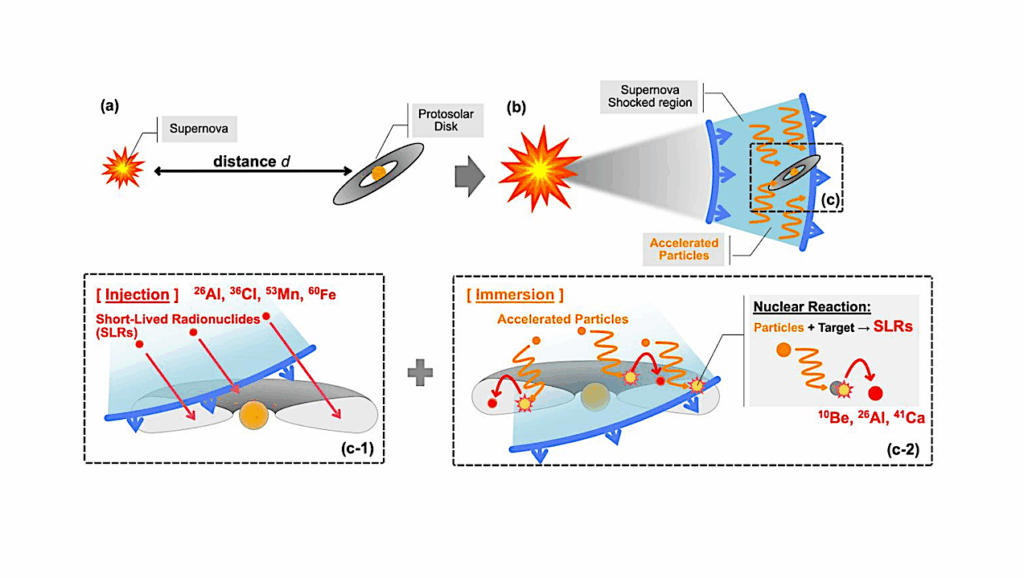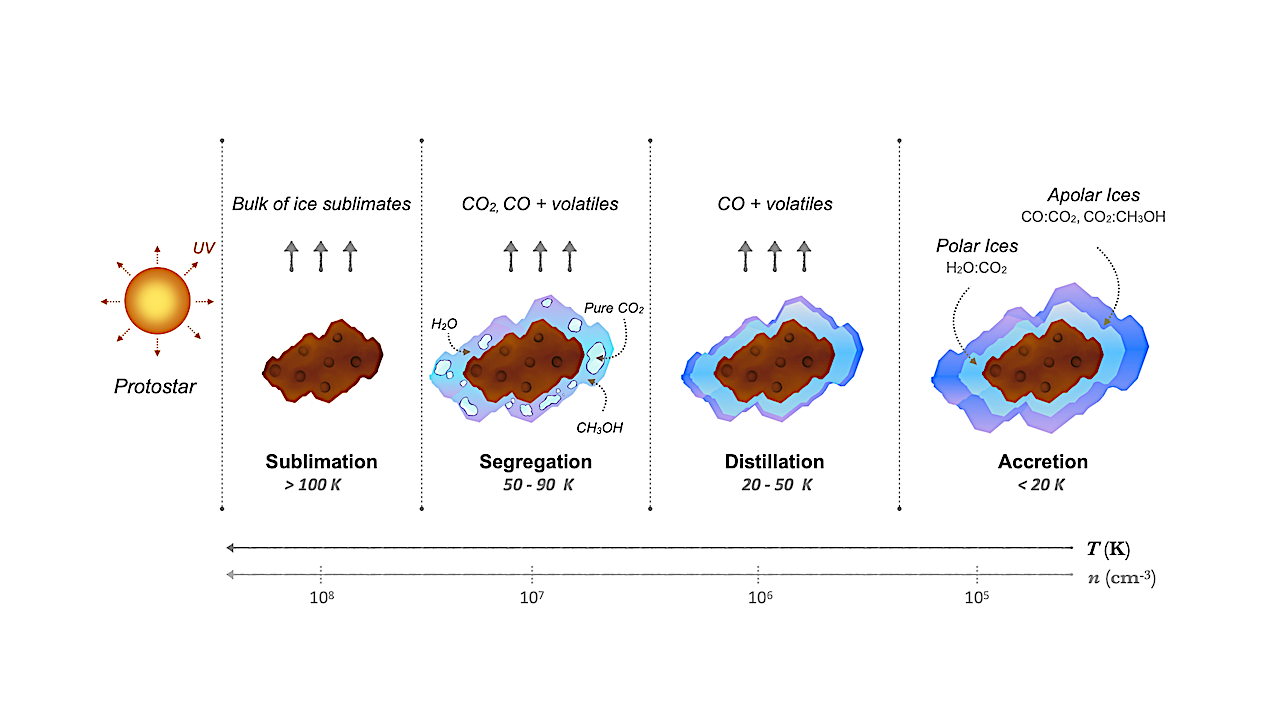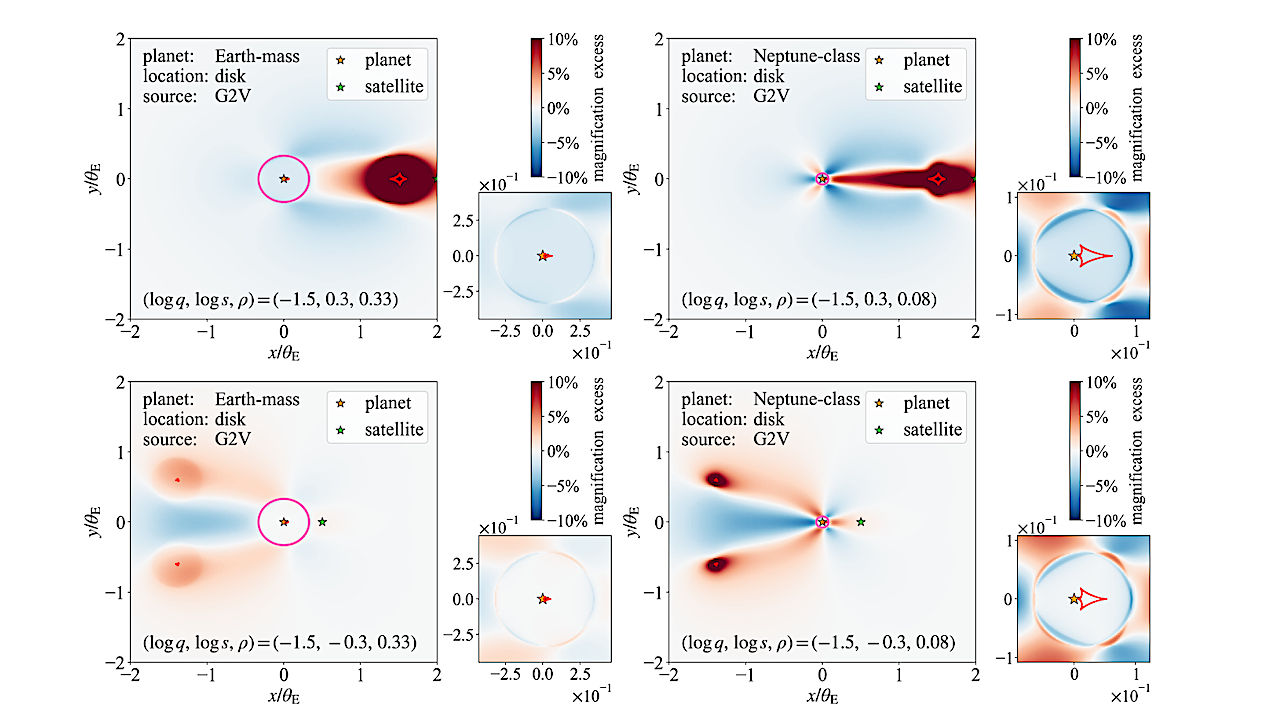Now Reading: MINDS. Water Reservoirs of Compact Planet-forming Dust Disk: A Diversity of H2O Distributions
-
01
MINDS. Water Reservoirs of Compact Planet-forming Dust Disk: A Diversity of H2O Distributions
MINDS. Water Reservoirs of Compact Planet-forming Dust Disk: A Diversity of H2O Distributions


Normalised to peak flux spectra of our sample of millimetre-compact disks. The red line indicates the estimated continuum. The indicated types and their meaning are discussed in Section 5.1. In blue we have highlighted the 23.72-24.03 µm wavelength region, where two transitions are located that are most important for obtaining information about the cold H2O reservoir. — astro-ph.EP
Millimetre-compact dust disks are thought to have efficient radial drift of icy dust pebbles, which has been hypothesised to produce an enhanced cold (T<400 K) H2O reservoir in their inner disks.
Mid-infrared spectral surveys, now with the James Webb Space Telescope (JWST), pave the way to explore this hypothesis. In this work, we test this theory for 8 compact disks (Rdust<60 au) with JWST-MIRI/MRS observations. We analyse the different reservoirs that can be probed with the pure rotational lines (>10 μm) through parametric column density profiles, multiple component slab models, and line flux ratios.
We find that not all compact disks show strong enhancements of the cold H2O reservoir, instead we propose three different classes of inner disk H2O distributions. Four of our disks appear to have similar H2O distributions as many of the large and structured disks (Type N or “Normal” disks), as is indicated by the slab model fitting and the line flux ratios. These disks have a small cold reservoir, suggesting the inward drift of dust, but it is not as efficient as hypothesised before.
Only two disks do show a strong enhancement of the cold H2O emission (Type E or cold H2O enhanced disks), agreeing with the original hypothesis. The two remaining disks are found to be very H2O-poor (Type P or H2O-poor disks), yet show emission from either the hot or immediate reservoirs (depending on the fit) in addition to emission from the cold one.
We find that different parametrisations are able to provide a good description of the observed H2O spectra, with the multiple component analysis yielding similar results.
Finally, we also report the detection of other molecules in these disks, including a tentative detection of CH4 in CY Tau.
Milou Temmink, Andrew D. Sellek, Danny Gasman, Ewine F. van Dishoeck, Marissa Vlasblom, Angèl Pranger, Manuel Güdel, Thomas Henning, Pierre-Olivier Lagage, Alessio Caratti O Garatti, Inga Kamp, Göran Olofsson, Aditya M. Arabhavi, Sierra L. Grant, Till Kaeufer, Nicolas T. Kurtovic, Giulia Perotti, Matthias Samland, Kamber Schwarz, Benoît Tabone
Comments: Accepted for publication in A&A on 20/05/2025; 34 pages, 20 figures, 10 tables
Subjects: Earth and Planetary Astrophysics (astro-ph.EP)
Cite as: arXiv:2505.15237 [astro-ph.EP] (or arXiv:2505.15237v1 [astro-ph.EP] for this version)
https://doi.org/10.48550/arXiv.2505.15237
Focus to learn more
Submission history
From: Milou Temmink
[v1] Wed, 21 May 2025 08:14:19 UTC (17,909 KB)
https://arxiv.org/abs/2505.15237
Astrobiology, Astrochemistry,
Stay Informed With the Latest & Most Important News
Previous Post
Next Post
-
 012024 in Review: Highlights from NASA in Silicon Valley
012024 in Review: Highlights from NASA in Silicon Valley -
 02Panasonic Leica Summilux DG 15mm f/1.7 ASPH review
02Panasonic Leica Summilux DG 15mm f/1.7 ASPH review -
 03From Polymerization-Enabled Folding and Assembly to Chemical Evolution: Key Processes for Emergence of Functional Polymers in the Origin of Life
03From Polymerization-Enabled Folding and Assembly to Chemical Evolution: Key Processes for Emergence of Functional Polymers in the Origin of Life -
 04How New NASA, India Earth Satellite NISAR Will See Earth
04How New NASA, India Earth Satellite NISAR Will See Earth -
 05And Thus Begins A New Year For Life On Earth
05And Thus Begins A New Year For Life On Earth -
 06Astronomy Activation Ambassadors: A New Era
06Astronomy Activation Ambassadors: A New Era -
07SpaceX launch surge helps set new global launch record in 2024




















